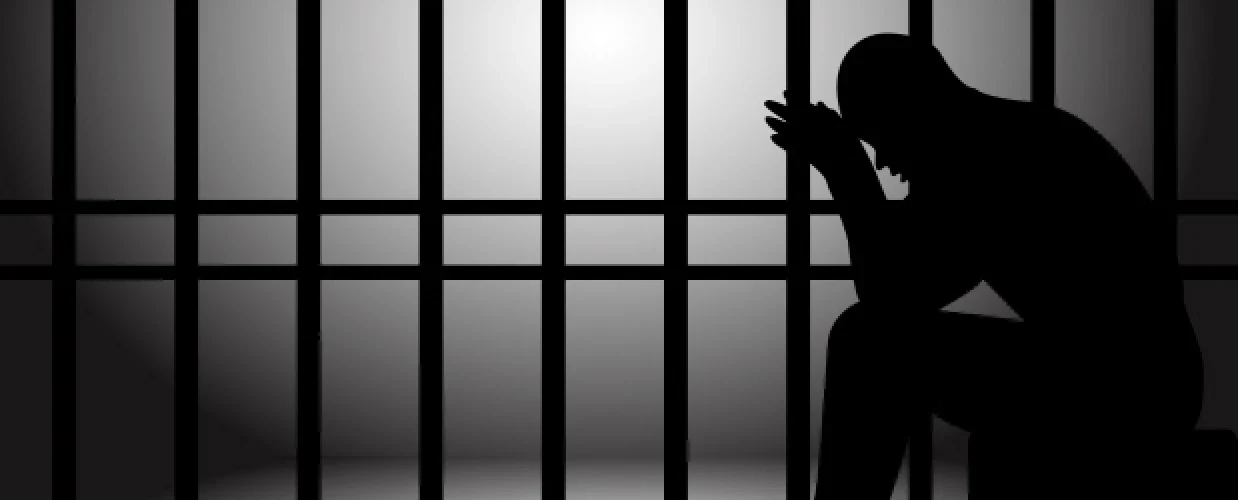There are currently two million individuals incarcerated in American jails and prisons. In the past 40 years, the prison population in this country has grown by 500%. According to The Sentencing Project, this unprecedented increase is due more to the changes in criminal justice policy and sentencing laws than to changes in the nation’s crime rates.1 Another recent, disturbing trend in criminal justice has been the significant increase of deaths—nearly one-third of them attributable to suicide in jails and prisons.2
This post explores the rising rate of suicide in jails and state and federal prisons, factors that may contribute to greater suicide risk among prisoners, and ways in which prisons and outside organizations are working to address these issues.
Suicide Among the Incarcerated and Other Criminal Justice Challenges
In 2019, there was at least one suicide in 19% of the federal and state prisons and 9% of the local jails in the U.S. The Bureau of Justice Statistics (BJS) reports that prisoner suicides accounted for 30% of local jail deaths and 8% of deaths in federal and state prisons. From 2000 to 2019, there were more than 6,200 suicides by inmates in local jails. Suicide deaths among those inmates increased by 13% during that time.2
Our criminal justice system faces other pressing challenges in addition to rising incarceration rates and suicide in jails and other correctional facilities. In recent years, discussions about the need for criminal justice reform have focused on safety measures beyond traditional policing and police accountability, unjust punishments for substance abuse, and the need to eliminate racial disparities in the justice system. There is also concern about social barriers faced by individuals with criminal records.3 This has led to increased scrutiny of the nation’s criminal justice system and calls for new ideas and approaches.
Factors That Contribute to Prisoner Suicides
In an international study exploring the connection between suicide, incarceration rates and other factors, it was found that in wealthier nations such as the U.S., practices currently in place have not been effective in lowering the suicide risk among prisoners. The several factors found to contribute to the risk of suicide in jails include:4
- Incarceration itself: Incarcerated men had three times the risk of death by suicide as men in the general population; female prisoners were at least nine times as likely to commit suicide as women who were not in the prison system
- The severity of crime already committed: Inmates who had committed a violent or otherwise serious offense were at an increased risk of suicide
- Mental health: Those with evidence of mental illness are especially vulnerable to thoughts of suicide
Further characteristics of local jail inmates who died by suicide include:2
- Most often, they were non-Hispanic white males, convicted for violent crime or another serious offense
- More than 75% were awaiting adjudicatory hearings and were not yet convicted
- Inmates age 55 and older had the highest rate of suicide
- 66% of suicide in jails took place within the inmate’s first 30 days of incarceration; 44% took place within the first week
In state and federal prisons, the rate of suicide increased by 83% from 2001 to 2019.2 The risk factors were similar to those in local jails, with a few exceptions:
- Most of the people who died by suicide in state and federal prisons were between ages 25 and 44
- 4% of state prisoners and 13% of federal prisoners who took their own lives had been convicted of a drug offense
- 75% of state prisoners and 64% of federal prisoners who died by suicide did so after their first year of incarceration
Recent years have seen a population shift from prisons toward more rural jails, as they’re increasingly used as holding facilities for people experiencing mental health crises, substance use disorders or poverty. This includes a growing number of women.5 This trend points to the need for robust programs and policy changes that can ensure specialized help for those suffering from homelessness, substance abuse and mental health issues, to keep them out of the criminal justice system.
How Are We Combating the Issue of Suicide Among the Incarcerated?
A few organizations focus on improving healthcare in jails and prisons. They work to identify those people at risk of suicide, in the quest to provide more timely intervention. The National Center on Institutions and Alternatives provides services to local and state correctional facilities across the U.S., including policy review and development and staff training.6 The Suicide Prevention Resource Center collects news and resources from worldwide facilities and organizations to follow trends in prison suicides, studies, prevention methods and success stories.7
The National Commission on Correctional Health Care, in collaboration with the American Foundation for Suicide Prevention, has published The Suicide Prevention Resource Guide—National Response Plan for Suicide Prevention in Corrections. This guide includes strategies for the prevention of suicide in prisons and case studies of correctional facilities in New Jersey and Massachusetts. Those studies detail several steps taken to prevent suicide in jails and prisons, including: 8
- Close examination of circumstances surrounding incidents
- Review of staff training and assessment procedures.
- Convening of a task force of corrections, medical and mental health personnel, and community advisors, to discuss solutions and develop comprehensive plans
- Updates to suicide prevention procedures and policies
- An expansion of the mental health staff with experienced counselors
- Review of electronic health records of every new inmate and 24/7 screening upon arrival
- Ongoing treatment plans and patient follow-up for at-risk inmates
What More Can Be Done to Prevent Suicide in Jails and Prisons?
Those who are concerned about mental health and suicide rates in incarcerated populations continue to raise awareness to bring about change in the criminal justice system. More attention is being paid to improving mental health treatment and reducing the country’s reliance on punishment and imprisonment. These efforts encourage sentencing reform, compassionate release, mental health and substance abuse treatment and rehabilitation.9
There are calls for broad criminal justice reform on a national level, as the current system has far-reaching social, racial and economic consequences, in addition to those of mental health difficulties and rising suicide rates.10 Some have asserted that, since the majority of incarcerated people in the U.S. are held in state and county facilities, reform must be at the state level. Many see a need for federal and state solutions to overcome the numerous challenges within our complex criminal justice system.11
Bring New Ideas and Solutions to American Criminal Justice
Committed leaders in criminal justice can reimagine a system that is more effective, compassionate and equitable. The online MA in Criminology and Criminal Justice from Kent State University can be the key to a rewarding career in this important, expanding field. Explore our curriculum, learn about our expert faculty, and reach out to one of our Admissions Advisors today.
Sources:
- Retrieved on October 26, 2021, from sentencingproject.org/criminal-justice-facts/
- Retrieved on October 26, 2021, from ojp.gov/news/news-release/nearly-fifth-state-and-federal-prisons-had-least-one-suicide-2019
- Retrieved on October 26, 2021, from americanprogress.org/issues/criminal-justice/news/2021/03/18/497328/5-discussions-shaped-justice-reform-movement-2020/
- Retrieved on October 26, 2021, from penalreform.org/blog/suicide-in-prison-a-new-study-on-risk/
- Retrieved on October 27, 2021, from prisonpolicy.org/blog/2021/06/23/jail_mortality/
- Retrieved on October 27, 2021, from ncianet.org/suicide-prevention/
- Retrieved on October 27, 2021, from sprc.org/settings/adult-justice-system
- Retrieved on October 27, 2021, from ncchc.org/filebin/Publications/NCCHC-AFSP_Suicide_Prevention_Resource_Guide.pdf
- Retrieved on October 27, 2021, from prisonlegalnews.org/news/2021/apr/1/jail-suicides-massachusetts-point-national-crisis-challenging-legislatures-say-not-one-more/
- Retrieved on October 27, 2021, brennancenter.org/our-work/policy-solutions/federal-agenda-criminal-justice-reform
- Retrieved on October 27, 2021, from brennancenter.org/our-work/research-reports/criminal-justice-reform-state-level




